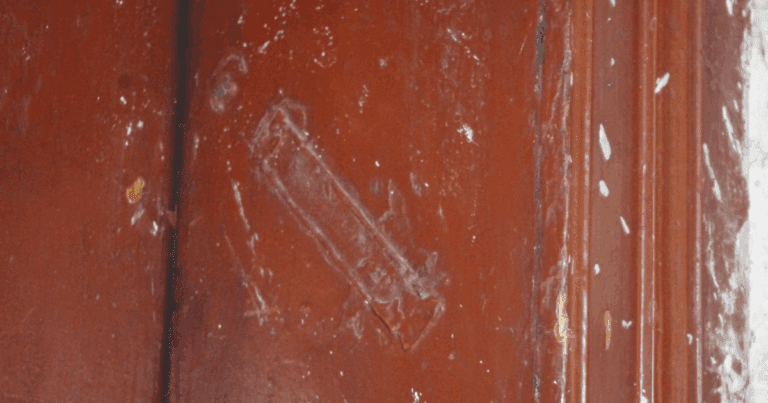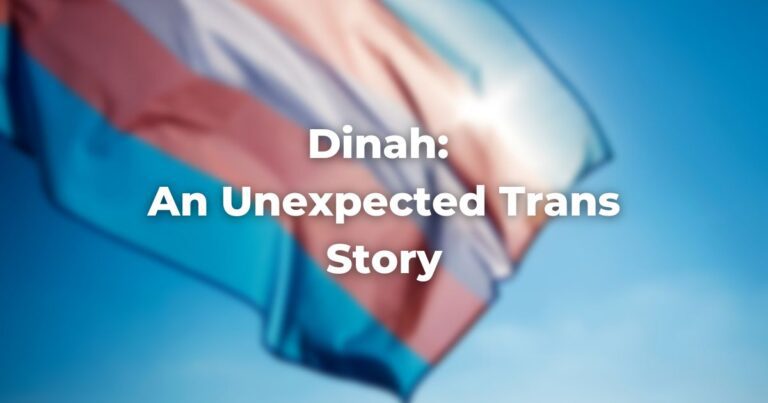Originally given as a senior sermon at JTS.
My whole life, I’ve loved to tell the story of who I am and the family I come from, one made possible only by Jewish emancipation, diaspora, modernity, and the great American melting pot. In a single strand of my DNA, you will find one product of an intricate love story between my Litvak yeshiva, Romanian kosher butcher, Sicilian peasant, and Turkish shamash ancestors. From New York and New England, my people all wound up in sunny Los Angeles. In my house, we spoke English with expressions from Yiddish, Ladino, Italian, and Hebrew. No, being a mutt has not exempted me from Jewish genetic woes, but it has made me aware of how incredible it is to live in a multicultural society and celebrate diversity. Perhaps that is why I always found the Tower of Babel narrative to be a bit of a personal affront.
At the end of Parashat Noach, we read about Migdal Bavel, the Tower of Babel. We learn of these early people:
וַיְהִ֥י כׇל־הָאָ֖רֶץ שָׂפָ֣ה אֶחָ֑ת וּדְבָרִ֖ים אֲחָדִֽים׃
Everyone on earth had the same language and the same words.
A few verses later, the TorahRefers to the first five books of the Hebrew Bible, the Tanakh, also called the Five Books of Moses, Pentateuch or the Hebrew equivalent, Humash. This is also called the Written Torah. The term may also refer to teachings that expound on Jewish tradition. Read more says:
וַיֹּאמְר֞וּ הָ֣בָה ׀ נִבְנֶה־לָּ֣נוּ עִ֗יר וּמִגְדָּל֙ וְרֹאשׁ֣וֹ בַשָּׁמַ֔יִם וְנַֽעֲשֶׂה־לָּ֖נוּ שֵׁ֑ם פֶּן־נָפ֖וּץ עַל־פְּנֵ֥י כׇל־הָאָֽרֶץ׃
And they said, “Come, let us build a city, and a tower reaching the sky, to make a name for ourselves; lest we shall be scattered all over the world.”
God looks at the tower, muddles their languages, and disperses them in what appears to be an act of anger and punishment. Most of us are taught that the sin of Migdal Bavel was the peoples’ hubris and resultant idolatry. Yet, the Torah does not explain why building the tower was wrong. And, even if we are sympathetic to the idea that some building projects are harmful, it’s hard to view harmony and common language negatively. What are we to make of this episode?
The Malbim states simply: the tower was a way of rejecting God. Chizkuni adds “and let us make a name for ourselves” means they sought to elevate themselves above other people and species. Their haughtiness, in relation to God and, in turn, other people, was their undoing.
Rashi synthesizes Talmudic and midrashic teachings comparing the generations of the flood and the dispersion and their imbalanced punishments. Rashi argues that although builders waged war against God, they had love, friendship, and cooperation amongst themselves, unlike Noach’s generation. In Rashi’s read, so lofty and majestic is the idea of peace that it can rise above even the sin of idolatry.
Some medievalists argued that the language the builders spoke was Hebrew, our sacred tongue. Others read the characters charitably, with goals of efficient urban planning. Radak suggests sweetly: they thought that if it was tall, they could always find their home from afar.
These readings don’t explain why God stops the construction, perhaps indicative that sin sometimes hides in holy language and normal acts. In those generous commentaries, maybe they spoke our sacred tongue and had positive aims, but they still did society wrong. Beautiful words and homogeneity are not defining markers of peace or an ideal society.
Professor Yeshayahu Leibowitz explained, similar to a teaching from Franz Rosenzweig, that “one language and the same words” isn’t about social harmony, but means Nazi-like totalitarianism, monolithicity, and conformism, wherein man is enslaved to ideology and loses the ability to be himself. Healthy societies have a plurality of viewpoints and languages. Leibowitz reads that the shift was not a punishment, but rather an act of God’s compassion to show them not only different languages, but cultures and ideas. Space for disagreement protects against control from a singular authority.
Rabbi Shai Held quotes a midrashThis word is used in two ways, as both a concept and a literature. As a concept, midrash is the expansive interpretation of biblical texts. The term is used to describe the practice of rabbinic interpretation. As a text, it refers to specific collections of interpretations, particularly from the third to ninth centuries in the Land of Israel and Babylonia. Plural: Midrashim
Read more that during the tower’s construction, if a builder fell and died, he was ignored. But if one of the bricks fell, the builders would cry over it. Their obsession with the collective project erased their care for human life, just two chapters after God establishes a Covenant to never destroy humanity again. Held continues: “An attempt to root out human individuality is an assault on God.” Still, he warns against fetishizing nonconformity, which can translate to narcissism and self-involvement. In celebrating unity without uniformity and individuality without selfishness, we get closer to God.
Supremacist ideologies, extremism, and erasure of either shared humanity or difference are a threat to our intimacy with God and each other. Our Seminary forefather, Rabbi Abraham Joshua Heschel, taught: “religion is a means, not the end. It becomes idolatrous when regarded as an end in itself. Over and above all being stands the Creator.” A religious man, he walked the walk. Heschel’s civil rights and Vietnam war activism was in partnership and conversation with Christians of various races from around the world. He showed us dogma is powerful, but it isn’t everything, and a religion that stands alone as an island is an idol.
There have been many calls in response to the war in Gaza or American politics to strive for unity in Jewish and civil society. Solidarity is meritorious and belongs in our collective consciousness. And, we need to uphold the essence of our Jewish and universal Covenant, honoring our similarity by being open to our difference.
Human progress starts with discourse and stagnates in the silence of complacency. Listening to perspectives that scare us and threaten our ideologies is a hallmark of a democracy. The antidote to a political regime that silences dissent and intellectual curiosity is to break the tower with dialogue. Pious expressions of humility separate our dispersed generation from the violent one God drowned in the flood or the hegemonic one God stopped from building the tower.
In sacred democracy, we don’t cancel ideas we don’t like: we ask questions. The silencing of ideas, left or right, has historically marginalized differences and, therefore, Jews. Without machloket l’shem shamayim, holy spirited debate, the moving particles of our shared humanity harden into stone idols. We lose what my almost decade in this tall ivory tower has taught me: questions and opposing ideas sustain the Jewish character of learning. Sometimes this practice is exhausting and frustrating, but the buzz of respectful machloket is the highest ideal of both the academy and the Beit MidrashLiterally, “house of study,” it refers to a school or a communal study hall. Plural: Batei Midrash Read more.
As an educator, my favorite students think I’m funny, and my second favorite students argue with me. I hope to build learning spaces rooted in the principle that Jewish multivocality and diverse identity are a catalyst for our togetherness. Disparate parts and histories like my own aren’t representative of fracture, but a complex symphony of love, family, and wholeness.
May we reject the easy dullness of conformity and extremism, listen with empathy, and disrupt the arrogance of Migdal Bavel, in pursuit of a legacy of human uniqueness.
Thank you to the Kadosh Baruch Hu, the donors who enabled me to make it here, List where I majored in Machloket and TalmudReferring to one of two collections, the Jerusalem and Babylonian Talmuds, edited in the 6th century, that contains hundreds of years of commentary, discussion, and exploration of the ideas in the Mishnah. One could describe it as Mishnah + Gemara = Talmud Read more, and Barnard where I majored in Sociology and Unafraid. My big family and our many friends for raising me, my patient friends, loyal and supportive classmates, my generous parents and grandparents for nurturing my Jewish education and molding me into everything I am, and my incredible fiance for being a worthy hevrutaA study partner. A hevruta is more than just a ‘study buddy’ it is a serious and personal relationship between colleagues. Also spelled: Havruta Read more and holding onto me in everything from CPE to my Israel year to ordination. Thank you to my dogs– I’m glad you made it on the ark, to the dozens of Jewish educators, professors, and professional mentors who have always pushed me toward better work, my students for showing me the next generation can and will surpass us, and finally to 3080 Broadway– for being the meeting place of the Jewish past, present, and future, and my dear home.
Author
-

Noa Rubin is a fifth-year rabbinical student at JTS ('26) and Barnard/List alumna ('20), originally from Los Angeles and currently based in Washington Heights. Noa is a passionate Jewish educator and has taught in camp, Hillel, Hebrew school, and informal Jewish education for over a decade. She loves to teach Talmud, halachah, and Jewish thought most. When she's not working or learning, you might find her planning parties and Shabbat menus, walking her puppy, making Spotify playlists, or explaining how television can indeed be high brow.
View all posts



